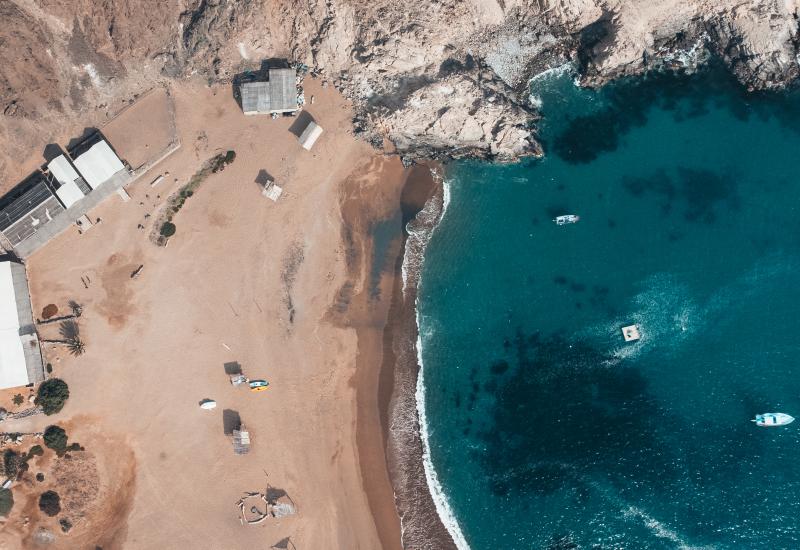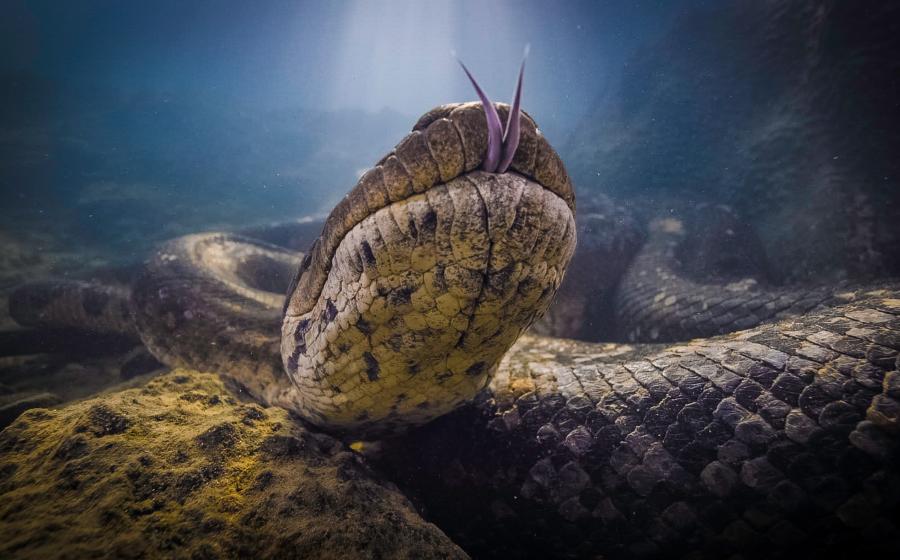How One Man's Obsession Created the Edmonds Underwater Park
Five-foot lingcod flit near fields of plumose anemones, white frills waving in the emerald waters of Puget Sound, the “notch” of western Washington’s mitten shape. Nearby divers explore an oceanic playground, where guide ropes web between purposely sunk boats, an obstacle course and a sword in the stone.
Life teems everywhere: abundant, vibrant and gloriously defiant of the gun-metal-gray surface on the area’s 226 cloudy days each year.
The popular Edmonds Underwater Park, 17 miles north of Seattle’s downtown, might just be sand, rocks and an old shingle mill’s cedar bark and debris, if not for one man. For 43 years, Bruce Higgins has led teams that sculpted this patch of ocean floor and submerged glacial moraine into a dive wonderland. Today the 27-acre site and marine sanctuary boasts 2.5 miles of trails, populated by some of the region’s densest marine life.
Since 1970, the EUP has sprawled outward from the open-air park of Brackett’s Landing North, beside the Edmonds-Kingston Ferry Terminal. “The underwater park was originally a commercial site,” Higgins recalls. “When I first dove there, it had an anchor for a log boom plus a couple of shopping carts. At first we were jockeying that stuff around. But then we started putting in features that made sense for the parks department, like a jungle gym. Everybody knows what a jungle gym is—it’s not a hard sell!”
Higgins’ low-key but persistent approach resulted in a titanic amount of volunteer work, knocked out weekend by weekend for more than four decades, all in an understated Pacific Northwest way. “Let’s do stuff instead of yak about it,” says the park’s long-time impresario.
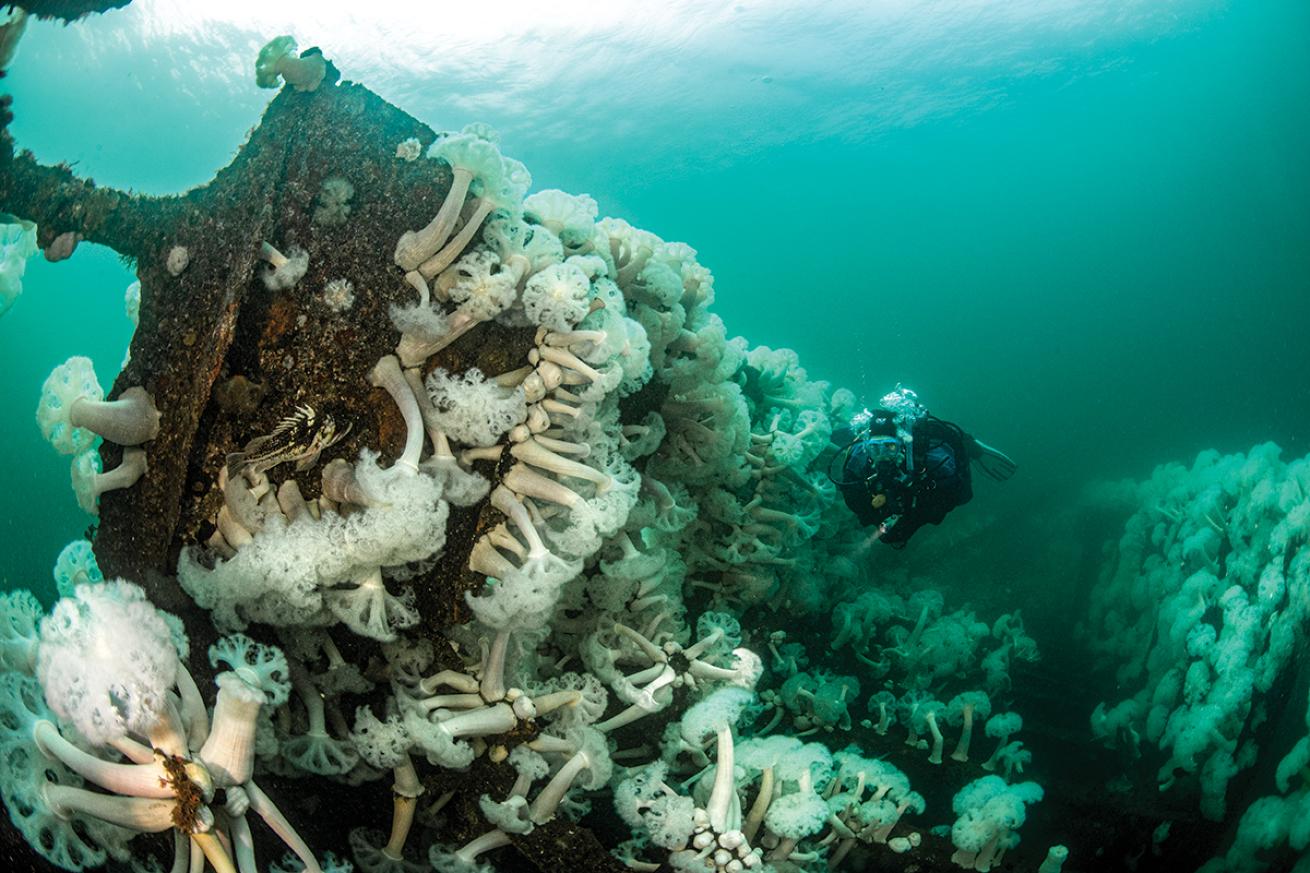
Annie CrawleyA diver swims through a metridium-encrusted artificial reef at Edmunds Underwater Park.
“No one needs to sit in a lab and talk about how to place a buoy. Get on a boat, put the shackles together, throw the anchor over the side and do it! Then you’ll understand what it’s all about!”
That approach appealed to Tro Rex Ota, a PADI dive instructor who became a park steward. “Initially I’d been interested in helping out at the Seattle Aquarium, but I wanted something more hands-on and community-oriented.” She took the plunge at EUP around 18 months ago and has done almost 300 descents, primarily building features and rockfish habitats.
“I get to observe different animals and interactions each time. Not only do I see every single part of the park, but I get to watch firsthand how fast and abundantly life moves in when we make changes,” Ota says. “We were connecting a section of trail and had put up some structure, and within the week, what had been a relatively uninhabited patch was now teeming with perch and juvenile rockfish and hermit crabs. It’s magical!”
Shaylin Higgins—a park steward who is Bruce Higgins’ niece—got involved in 2016. “The natural topography is sand with the occasional glacial erratic,” she says. “Without the rock piles and other odd structures that make up the park, only a fraction of the marine life would be there. Once I started to appreciate the incredible impact EUP stewards have, I wanted to be more involved.”
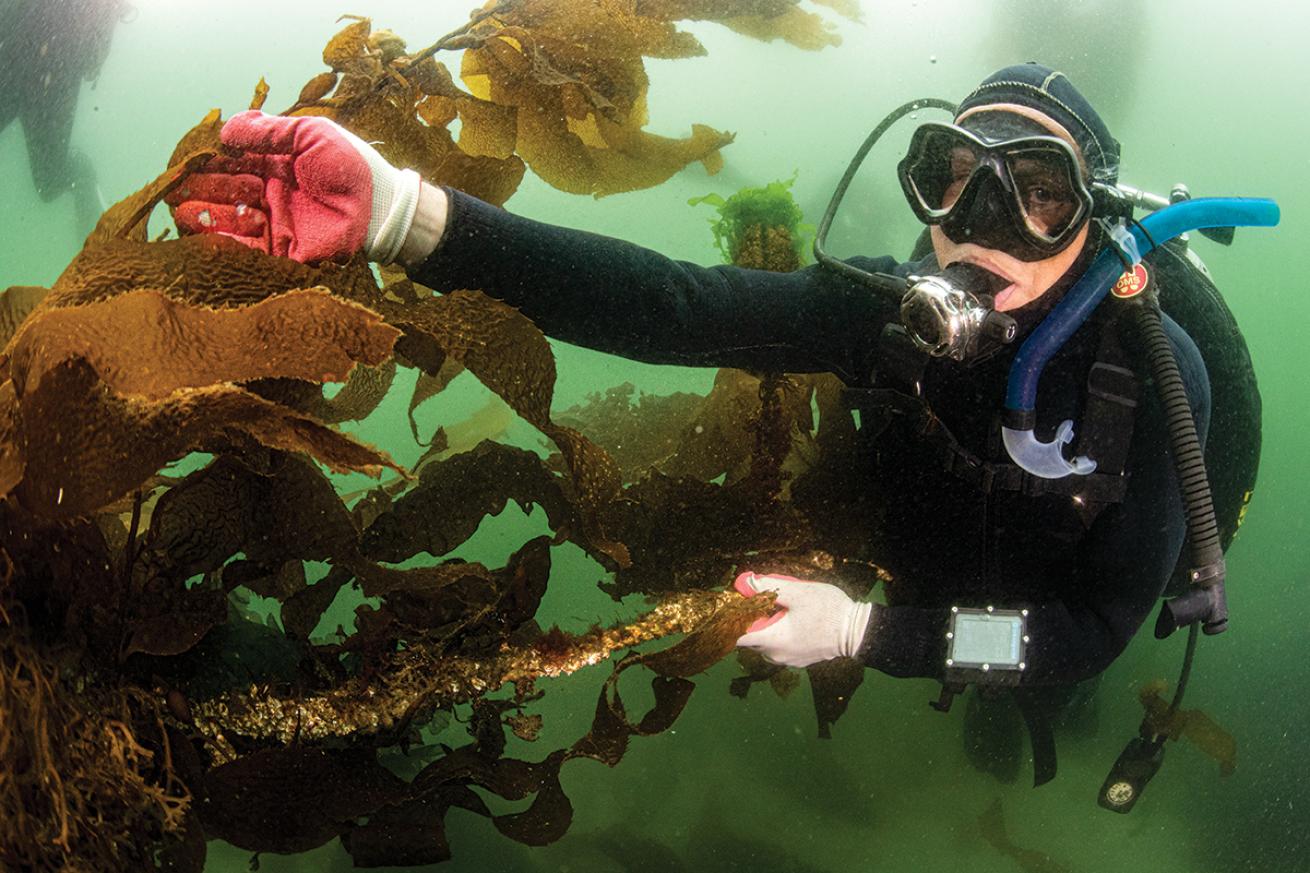
Annie CrawleyAs a dive volunteer at Edmonds Underwater Park for the past 43 years, Bruce Higgins has overseen numerous projects, such as helping to restore the site’s native kelp beds.
Because there is always something to do, the group is always diving. “It brings purpose to go diving, even with less-than-favorable conditions,” Shaylin Higgins says. “Cold day? We’ll haul cinder blocks to refresh an old trail. Poor visibility? We’ll go dig rocks to build cairns for the fish. The best part: Anyone can join; you just have to show up!”
Bruce Higgins has been leading stewardship efforts in the park since the late 1970s. Rain, shine or snow, he’s at the park at 9 a.m. on Saturday and Sunday, ready to dive.
“Bruce is a force of nature, and his commitment is contagious,” says Jack Schacher, a steward since 2009. “The projects change from season to season and year to year, but the one constant is his drive to maintain and enhance the park. It is never about himself. All of us who volunteer know that, which is why we are happy to help.”
EUP’s standout features include the 325-foot De Lion Dry Dock—the park’s southern delineator. Purpose-sunk boats include the 94-foot tug Alitak, as well as the 70-foot Triumph, scuppered in 1999.
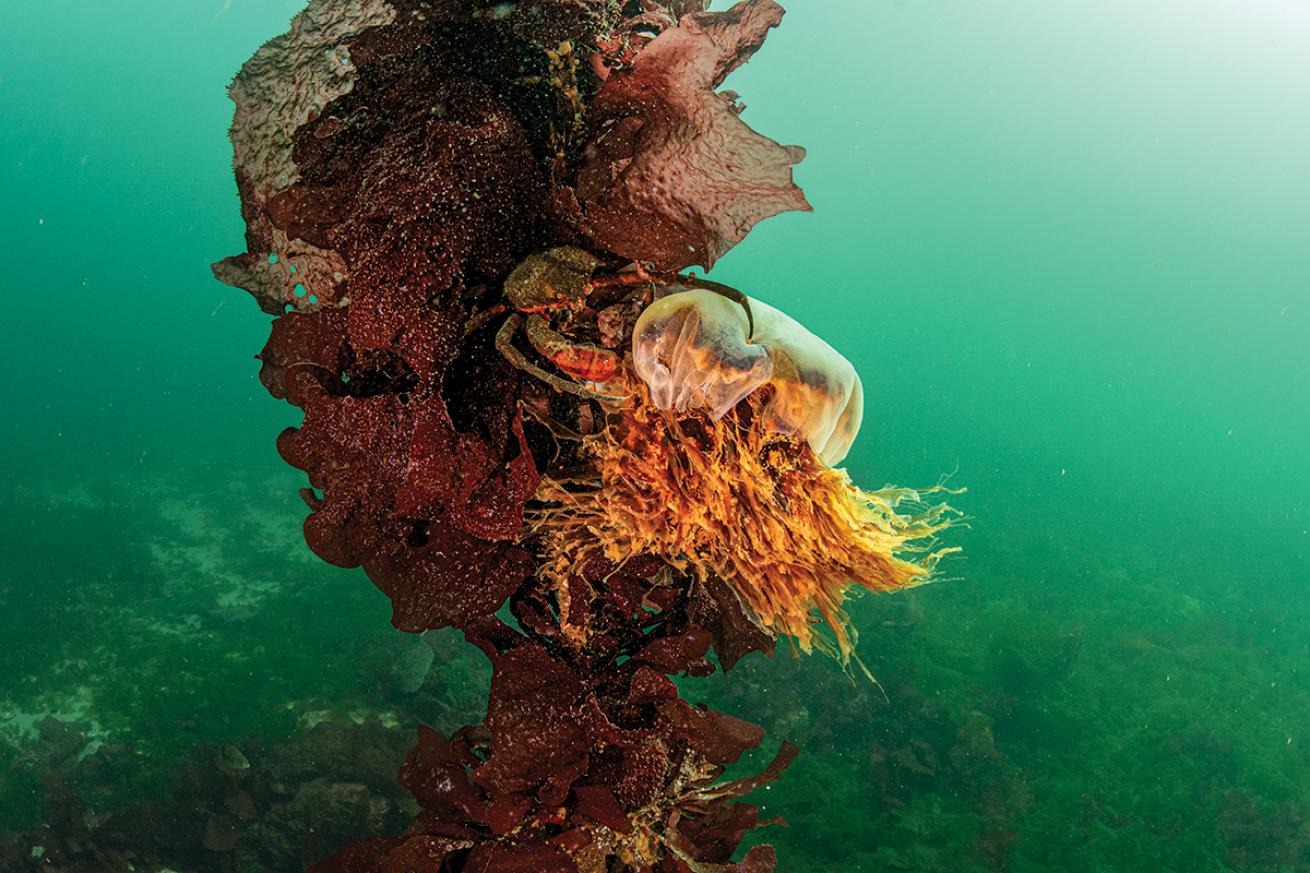
Annie CrawleyA kelp crab hangs from a marker buoy line with the catch of the day: a lion’s mane jellyfish.
The nutrient-rich inland waters support a riot of subaquatic flora and fauna, including cabezon, spotted ratfish and various greenlings and rockfish, along with gobies, flounders, sailfin sculpins, Dungeness crabs and occasionally giant Pacific octopuses.
“On sunny late-summer and early fall days with good visibility, fish school, and swimming above them is like a tropical dive,” Schacher says. “Also, the expansive 3D structure called Tube Henge is like the golden age of EUP construction to me. That was before my time, but I’m told it took three years of dives to build.”
No one knows the park better than its progenitor. But anyone capable of even an hourlong descent can soak up the essence. “Don’t do just one loop. Explore!” Higgins says.
Diving the Park
The Puget Sound area of the Salish Sea climbs from a frigid 44°F in February and March to a cool 58°F from July to September. “Even for seasoned divers, the cold can be a challenge,” says Shaylin Higgins. “Eat a good breakfast!”
Bruce Higgins says air movement plays a big role in visibility. The inland ocean of Puget Sound often reacts like a lake. If the wind blows from the south, it stacks water up in the north. This can create a strong seiche—French for “back and forth”—fluctuation, in addition to the tides, waves and river discharge. “You can wind up with shear— the surface current going north and the bottom one going south,” Shaylin Higgins warns.
For all the park’s complexity, it attracts around 25,000 visitors annually, many of them beginners. The biggest challenge typically lies in finding convenient parking at Brackett’s Landing North, or maybe in trundling cold-water dive gear down to the beach and surface-swimming it out, which can wind divers new to the EUP. But the main safety consideration is avoiding the Edmonds Ferry Terminal. Volunteers have made that easy, building trails and enticing features leading north, away from it.
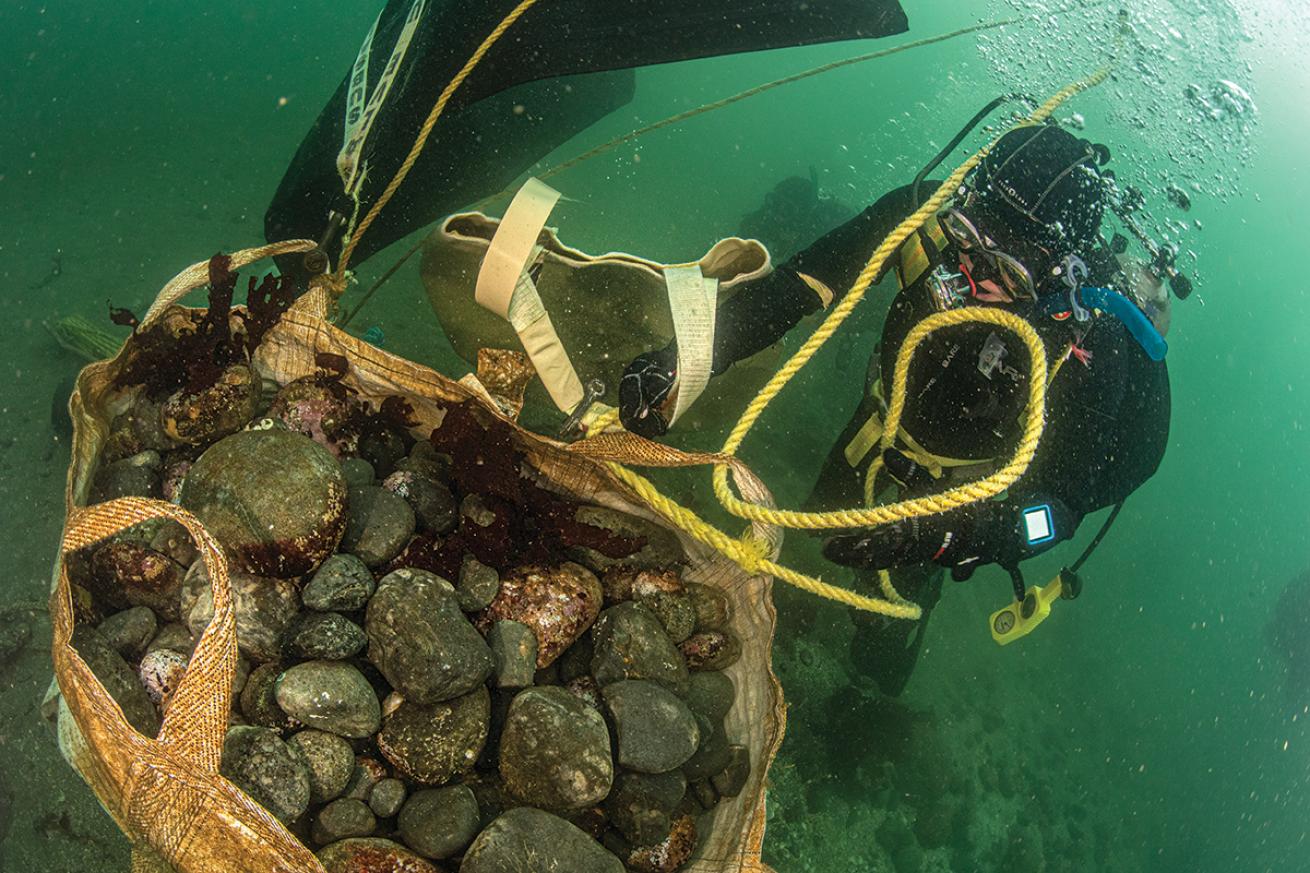
Annie CrawleyA diver unloads rocks to create a new underwater feature.
Expect a workout if you rock up for a park steward dive—they’re not unofficial tours. Volunteers lug lift equipment and materials down to the shore, in addition to their own kit. Afterward they must kick all the gear back to the beach and reverse that odyssey. “Those rock piles, rail ties, culvert pipes, cement blocks and ropeways don’t get there by themselves,” Schacher says. “I dive a drysuit, but lots of times my undergarments get wet. It’s not because I have a leak; it’s because I work so hard that I sweat!”
Fancy a descent that burns fewer calories? Schacher recommends exploring the EUP as the sun descends. “All the structures make night diving special, and the trails make navigation easier.” (A permit is required for night diving but is easily obtained from the city of Edmonds.)
Birth of a Super Hero
Bruce Higgins never set out to be a dive legend.
“As an undergrad, I ended up working as an electronics specialist and sort of a scientific liaison on a research vessel that had some dive operations going on. I thought that would be a good thing to add to my repertoire. So the following year, when the University of Michigan had its first big scuba program, I was able to sign up and complete that in 1970.”
Eventually Higgins shifted into a dive-safety officer role for the Great Lakes Research Division. He went on to grad school at Oregon State in the ocean engineering department.
“I wanted to stay in the Northwest, so I ended up teaching oceanography and electronics at Shoreline Community College,” just north of Seattle.
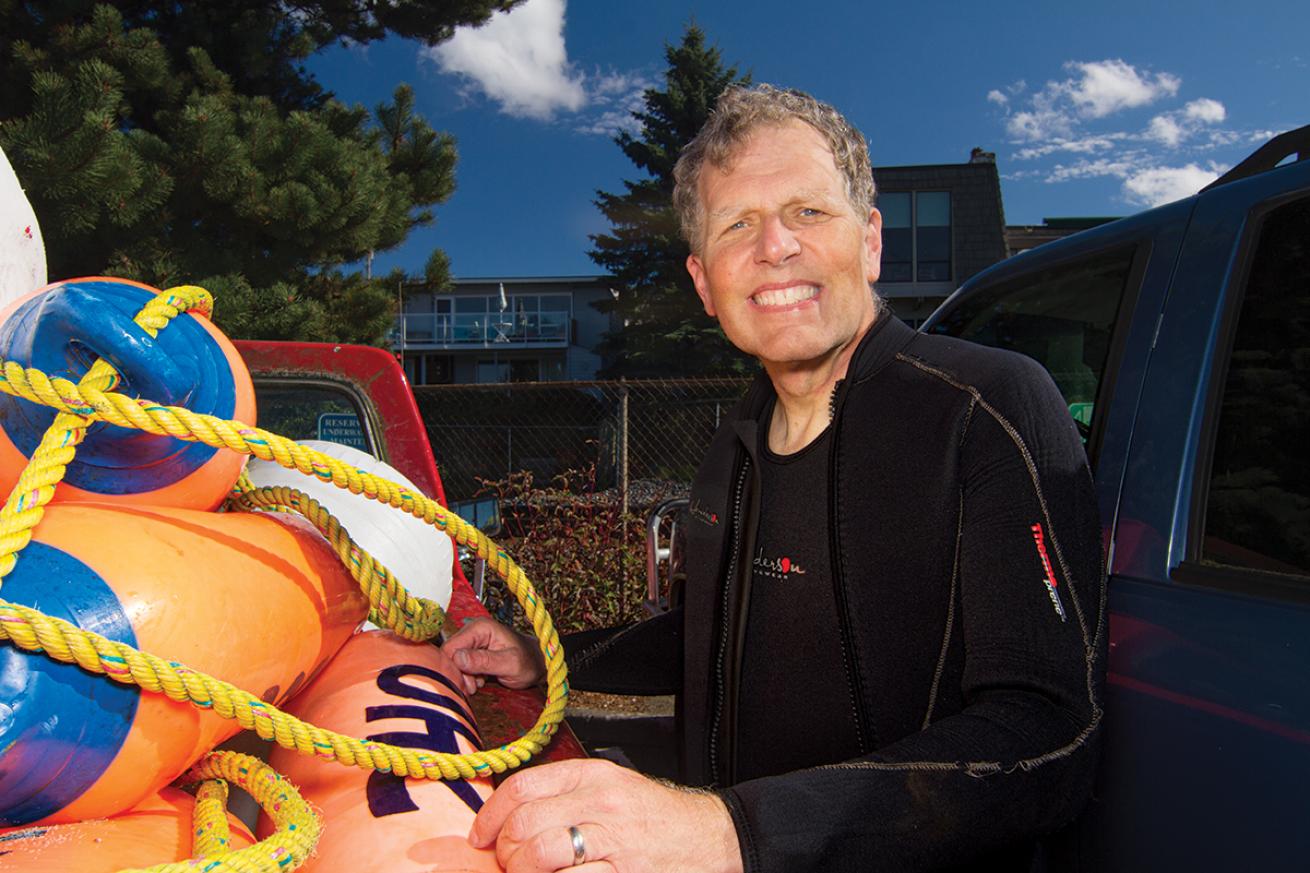
Annie CrawleyBruge Higgins
In 1976, the state wanted to build a fishing pier in the adjacent city of Edmonds and needed to reroute divers from the area next to the port. A university acquaintance was tasked with making the every day and pretty much only dive the park, aside from an annual trip to Salt Creek Recreation Area in Port Angeles,” 85 miles northwest of Seattle.
“In 2020, I did the math and discovered I only made 351 dives in the park. I got aced out for almost two weeks. My truck didn’t have snow tires on it, so I couldn’t drive anywhere. But I did walk to the park so I could see what was going on!”
Once he finally got underwater, he discovered that a 40-foot tree had whooshed down the Snohomish River, its giant root ball wiping out one of the buoys. That type of damage is routine in the Pacific Northwest—he’s also seen boats and their detached equipment land in the EUP during rough storms. Higgins and his team return the gear and overlook emergency encroachments on the marine sanctuary, where possible. “I never want to punish people who are trying to be safe and do the right thing,” he says. “Plus, we already have a 500-pound Danforth anchor. We don’t need two!”
In 2007, the city renamed the path system the “Bruce Higgins Underwater Trails” to honor the work of the man it acknowledged as the “main force behind the ever-expanding list of submerged features and trails.”




